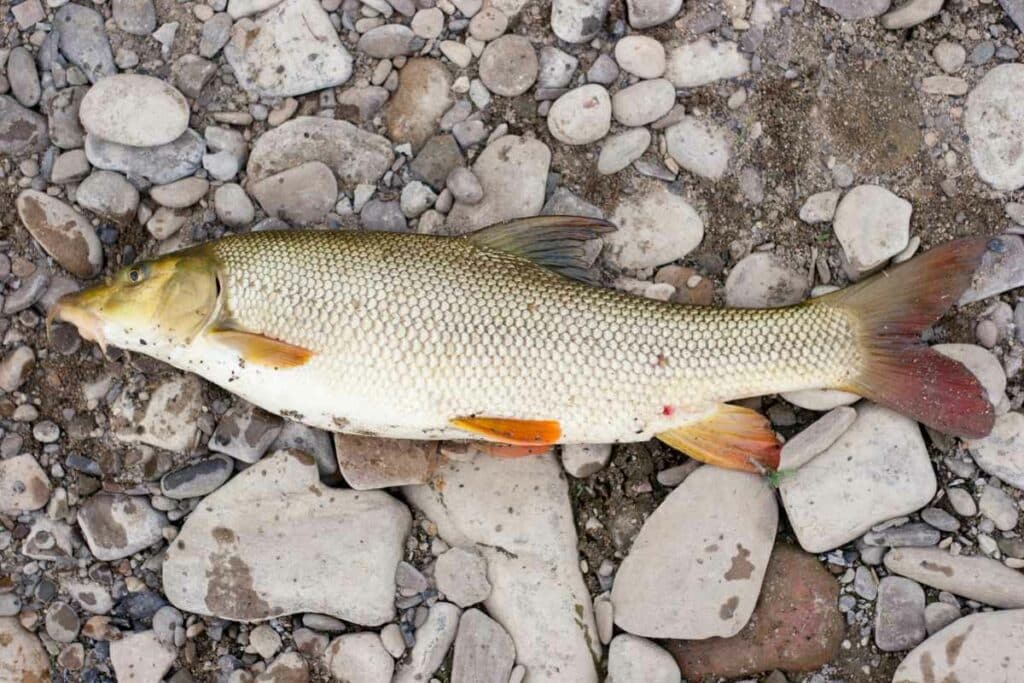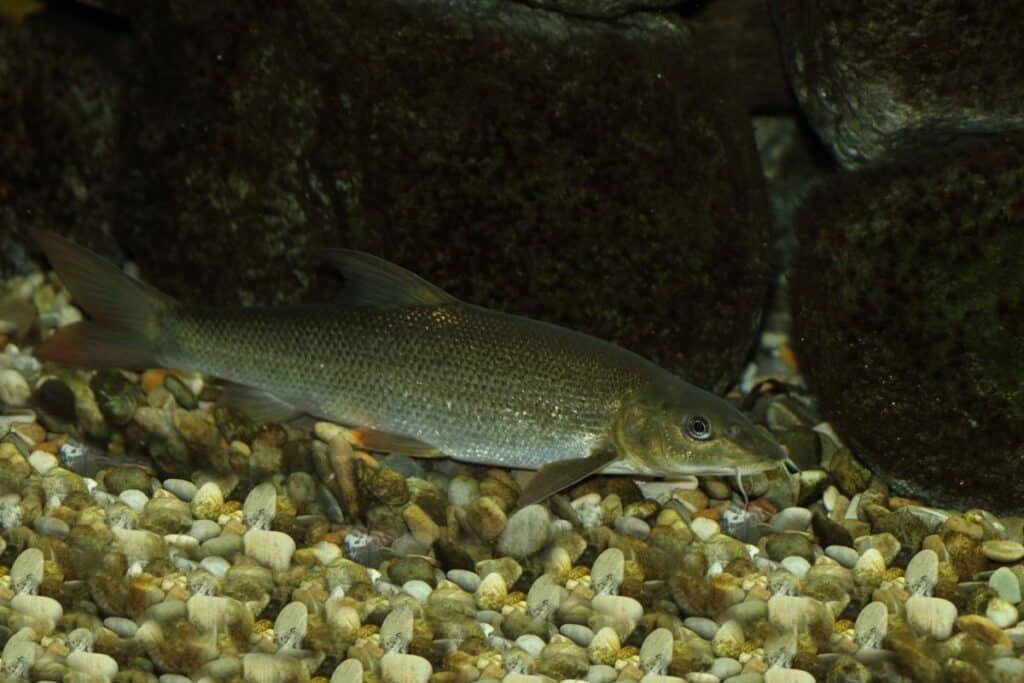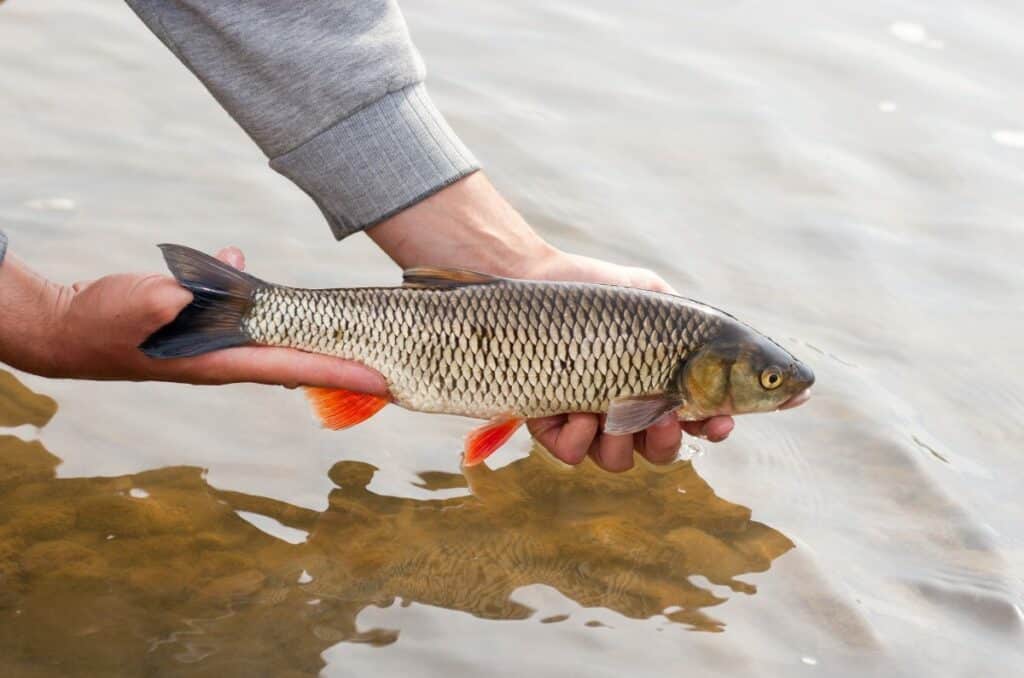the essentials in brief
Siamese Ale Eaters should be kept in a spacious aquarium with hiding places and soft sand as a substrate. A group of at least five animals is recommended to encourage their natural social behavior. More information here.
Siamese Algae Eaters can reach a size of about 12 to 15 cm, with the females usually being slightly larger than the males. More about the fish here.
Siamese Ale Eaters are peaceful fish and can be socialized well with other peaceful species. Learn more here.
Have you always been interested in exotic aquarium fish and would you like to find out more about the fascinating Siamese algae mullet? In this detailed blog post you will find out everything you need to know about the world of the breathtaking freshwater creatures. Together we will illuminate their special features and their importance for aquaristics. Let yourself be enchanted by these colorful and playful fish and find out how you can offer the Siamese Alebeel Eaters a species-appropriate and happy home.
The Siamese Ale Eater - Unique fish

The Siamese Ale Eater, also known as Epalzeorhynchos siamensis, is a fascinating eye-catcher in any aquarium. The freshwater fish originally comes from Thailand and Malaysia and belongs to the carp family. The slender body, the conspicuous black stripes and the eponymous "snout" on its snout make the Alchemist a unique and colorful resident of the aquarium. With a average size of about 12 to 15 cm Siamese algae mullets are rather medium-sized fish. The females are usually slightly larger than the males. But the Siamese elephant snout is not only an eye-catcher, but also a useful helper for the ecosystem in the aquarium. Because the freshwater fish like to eat algae from surfaces and plants.
Additional information: The Siamese Ale Eater has been severely eliminated from its natural habitat in Thailand and Malaysia through habitat destruction and overfishing. Since then it has been one of the fish species threatened with extinction.
The best way to keep Siamese algae barbs
Siamese Ale Eaters are hardy fish that can live up to 10 years if cared for appropriately. In order to offer Siamese Algae Eaters a species-appropriate and ideal home, you need a spacious aquarium with a capacity of at least 100 liters. The water parameters should be slightly acidic to neutral (pH 6,5-7,5) and the temperature between 24 ° C and 28 ° C lie.
In addition to the water temperature and parameters, the equipment in your aquarium is also crucial so that your Siamese algae mullet can develop optimally and feel comfortable. The freshwater fish love it in a Environment with many hiding places to live. Therefore, give your alfalfa ample opportunities to hide, for example through plants, roots or caves. So they can withdraw if necessary. In addition, a soft sand bottom ideal as a base as the fish have sensitive barbels and could potentially injure themselves on coarse gravel. In addition, the sand ensures a natural environment.
Note: Make sure your aquarium is well filtered and regular water changes are performed to ensure good water quality for your residents.
Keeping with other species of fish
The Siamese Ale Eater is a very active fish with an interesting personality. The freshwater fish are known for their playful and inquisitive nature and are popular with many aquarium owners. Because of their rather peaceful and sociable way, they can be socialized with other peaceful fish species without hesitation. It is best to keep the Siamese Algae Eater in one Group of at least five animalsto encourage their natural social behavior. However, avoid socializing with more aggressive fish, as these can put the relaxed and harmonious Aleman under stress.
Suitable roommates:
- peaceful barbel species
- danios
- peaceful catfish species
- loaches
Note: Be careful when socializing with other barbs, as territorial fights may occur. Also make sure that all the fish in your aquarium have similar water requirements so that you can offer them a harmonious and optimal home.
The right diet for Siamese Alebeel Eaters

The Siamese Algae Eater is a omnivorewhether plant or animal. In the wild, it feeds on plants, small insects and larvae. In the aquarium, however, you can provide them with a balanced diet of high-quality flake food, freeze-dried or live insect larvae, and plant-based food such as vegetables or lettuce. In addition, special food tablets for bottom dwellers are a good way of enriching the algae's diet. One varied and healthy diet ensures that your Siamese Alefat receive all the necessary nutrients and can continue to be active. A varied diet contributes to their health and vitality and satisfies their natural eating habits.
Siamese Algae Eater - Diseases
As with all aquarium fish, Siamese Alchemists can be susceptible to certain diseases. A common problem is ichthyophthiriosis, also known as white spot disease known. Small white dots appear on the skin and fins of the fish. This parasitic disease can cause significant stress and health problems for freshwater animals. Good water quality, regular water changes and species-appropriate husbandry can therefore help to minimize the risk of disease. A veterinarian or specialist should be consulted immediately if there are any signs of discomfort, such as changes in behavior or physical appearance.
Breeding of Siamese Algae Eaters
Breeding Siamese Alebeel Eaters can be one rewarding challenge for experienced aquarists be. The sexes are difficult to distinguish externally, but during the spawning season males develop white tubercles on the gill covers and fins. The females are usually slightly rounder and larger than the males.
Before you begin breeding, you may want to set up a separate breeding tank complete with fine-leaved plants and hiding places. The water temperature should be raised to around 28°C to stimulate mating behavior. Egg laying often occurs early in the morning. After laying, the parents should be removed from the breeding tank again, otherwise they could eat their own eggs. The young fish hatch after about 24 to 36 hours and can be fed fine-feathered food such as infusoria or dust food.
Fascinating and unique!
Siamese Ale Eaters are fascinating and colorful freshwater fish that delight many aquarium enthusiasts with their unique appearance and playful behavior. Their conspicuous black stripes and the eponymous "trunk" make them an eye-catcher in every aquarium. So if you are looking for low-maintenance and sociable inhabitants for your aquarium, Siamese Alefat might be the perfect choice for you. With their charming character and their unique appearance, they will certainly become a special highlight in your underwater paradise.

